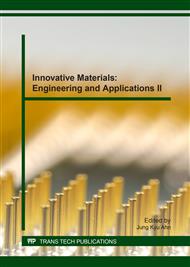p.510
p.516
p.521
p.527
p.533
p.541
p.548
p.554
p.563
Comparison of the Interface-Capturing Behavior between LSM and MCLS
Abstract:
Numerical simulation of the moving interface is widely investigated in the fields of two-phase flow, crystal growth, molten metal casting and so on. To simulate accurately and quickly motion state of the moving interface, two types of interface-capturing method, LSM (level set method) and MCLS (mass-conserving LSM coupled with VOF (volume of fluid)), were comparatively analysed and studied. Two kinds of moving interface, rotation motion of Zaleska slotted disk interface and shearing deformation of the circle interface, were simulated. The level set advection equation was solved with IATVD (the characteristic integral-averaging finite volume method), RK-WENO (the third order Runge-Kutta method with WENO (weighted essentially non-oscillatory)), or the low order method, respectively. The level set function was re-initialized with modified Godunov method. Computation was implemented in different size mesh. When it is independent with mesh size, results show that the high order method, IATVD and RK-WENO, can get higher computing accuracy in LSM without topological geometry change. But computing time cost of RK-WENO is much greater than that of IATVD. For the low order method, LSM captures the moving interface in bad, however, MCLS’s numerical result is very good. But computing time cost of MCLS is much and much greater than that of LSM. For interface-capturing with topological geometry change, these two high order methods all can not capture the moving interface in good in LSM. Nevertheless, the resulting interfaces all are same as original interface in MCLS. These indicate that an appropriate numerical method and interface-capturing method can be chosen to accurately and quickly capture the related moving interface.
Info:
Periodical:
Pages:
533-540
Citation:
Online since:
February 2017
Authors:
Keywords:
Price:
Сopyright:
© 2017 Trans Tech Publications Ltd. All Rights Reserved
Share:
Citation:


